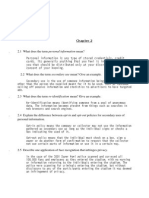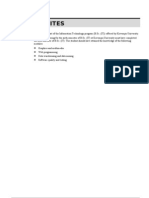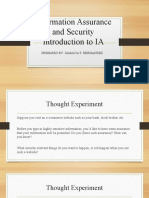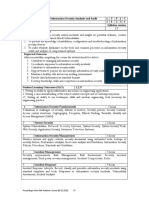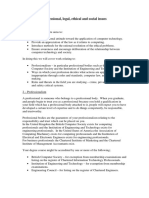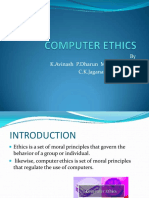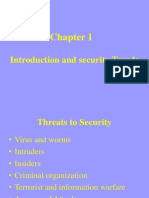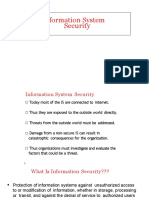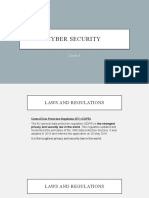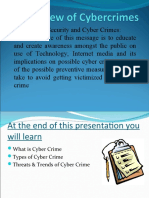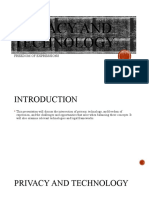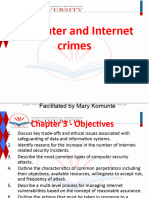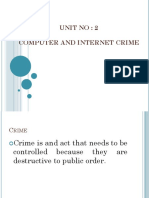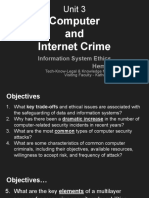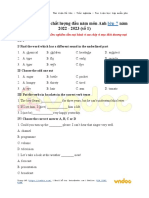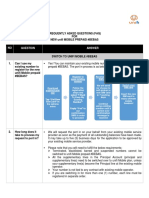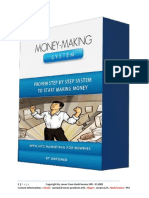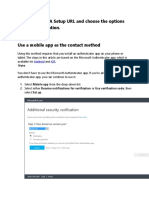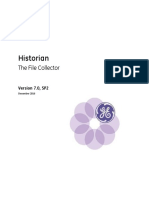0% found this document useful (0 votes)
168 views47 pagesL3 Computer Crime and Computer Crime Act
This document discusses computer and internet security incidents. It covers why incidents are prevalent due to increasing complexity, user expectations, and reliance on commercial software. It describes types of exploits like viruses, worms, Trojan horses, DDoS attacks, rootkits, spam, and phishing. It discusses types of perpetrators such as hackers, crackers, malicious insiders, industrial spies, cybercriminals, hacktivists, and cyberterrorists. It also covers implementing trustworthy computing, risk assessment, security policies, education, prevention, detection, response, and the Computer Crime Act of 1997.
Uploaded by
Ling Siong TeckCopyright
© © All Rights Reserved
We take content rights seriously. If you suspect this is your content, claim it here.
Available Formats
Download as PPTX, PDF, TXT or read online on Scribd
0% found this document useful (0 votes)
168 views47 pagesL3 Computer Crime and Computer Crime Act
This document discusses computer and internet security incidents. It covers why incidents are prevalent due to increasing complexity, user expectations, and reliance on commercial software. It describes types of exploits like viruses, worms, Trojan horses, DDoS attacks, rootkits, spam, and phishing. It discusses types of perpetrators such as hackers, crackers, malicious insiders, industrial spies, cybercriminals, hacktivists, and cyberterrorists. It also covers implementing trustworthy computing, risk assessment, security policies, education, prevention, detection, response, and the Computer Crime Act of 1997.
Uploaded by
Ling Siong TeckCopyright
© © All Rights Reserved
We take content rights seriously. If you suspect this is your content, claim it here.
Available Formats
Download as PPTX, PDF, TXT or read online on Scribd
/ 47







